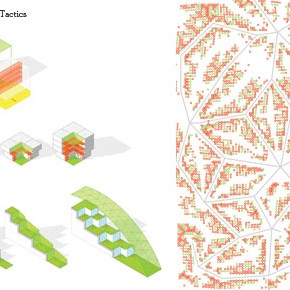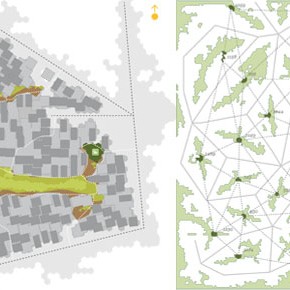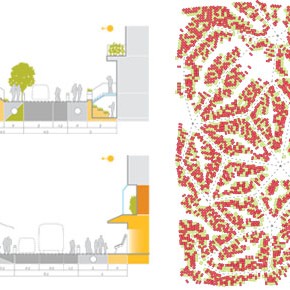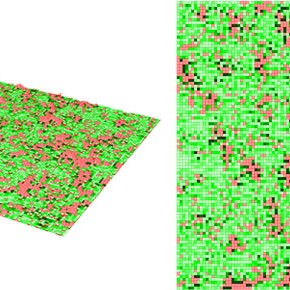
Productive Typologies
Our built clusters display unique internal and external characteristics. Internally, within the clusters, are dwellings, greenhouses and mixing spaces in a gradient of public/private-ness of each. Externally, the clusters are situated uniquely between two distinct networks, urban and agricultural. The unique configuration suggests new architectural typologies. Cluster analysis Topological analysis, at the cellular level, informs...

Productive Blocks
From the summation of these previous steps, the basic form of organization of our urban tissue emerges; the Productive Block. The section reveals three layers of spatial experience – Productive Commons on the interior, Urban Corridors around the edges, and a permeable zone of dwellings, greenhouses and public mixing spaces, delimiting the two. The Productive...

Productive Networks
The previously generated network edges will become the primary urban circulation paths and will need to support the full complement of public urban programs including Social Mixing (retail, entertainment, institutions and workspaces), Transport, and Recreation/Gathering (urban squares and green spaces). Topological analysis informs the program types and area assigned to each network component. Highly connected...

Settlement Simulation
The Settlement Simulation is a computational model based on multi-state cellular automata. The model uses simple behavioral rules to recreate the aggregation logic of dwellings and small subsistence farms in a given field via a self-organizing ‘vernacular’ methodology. The goal of the simulation is to investigate the sorts of distributions and collective form that might...
